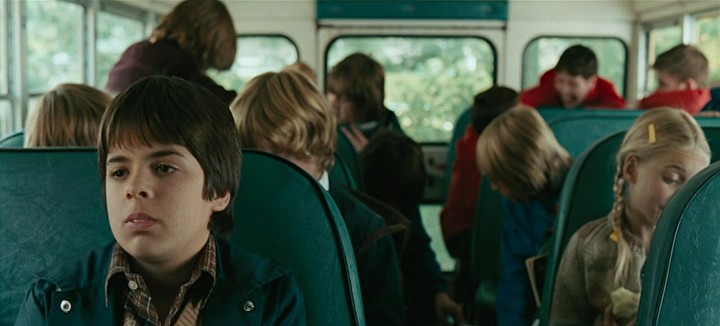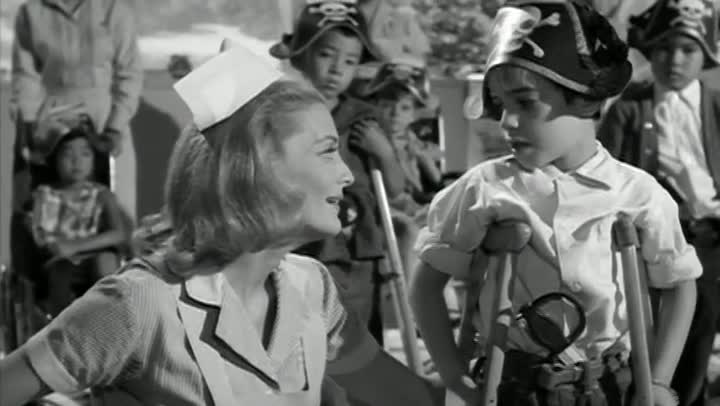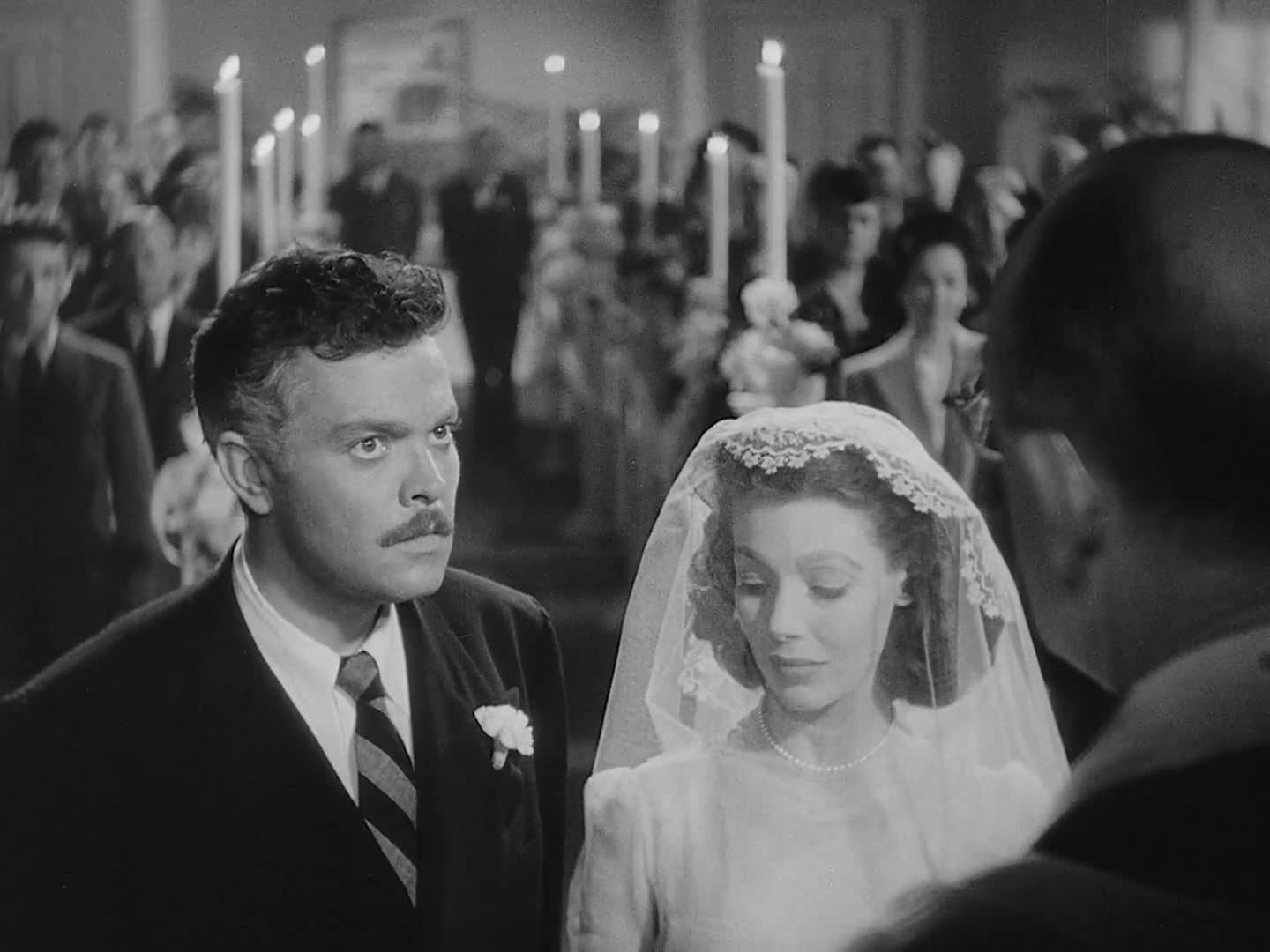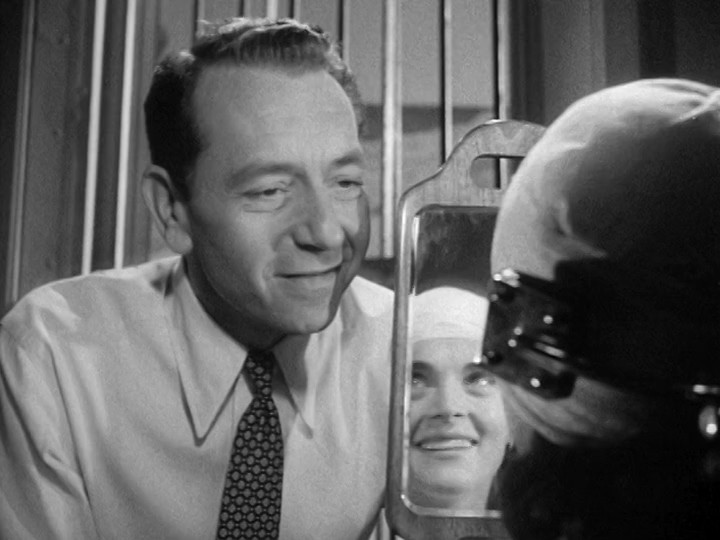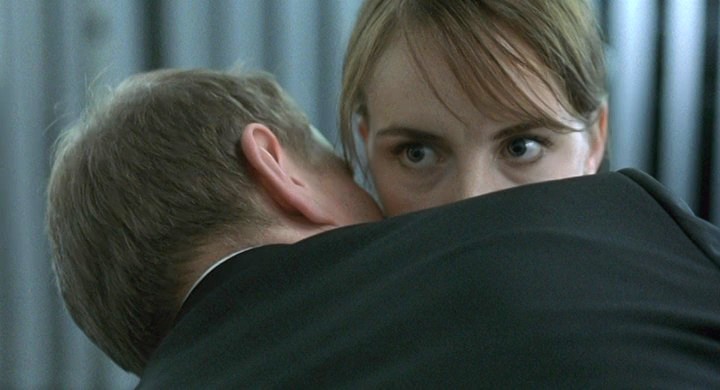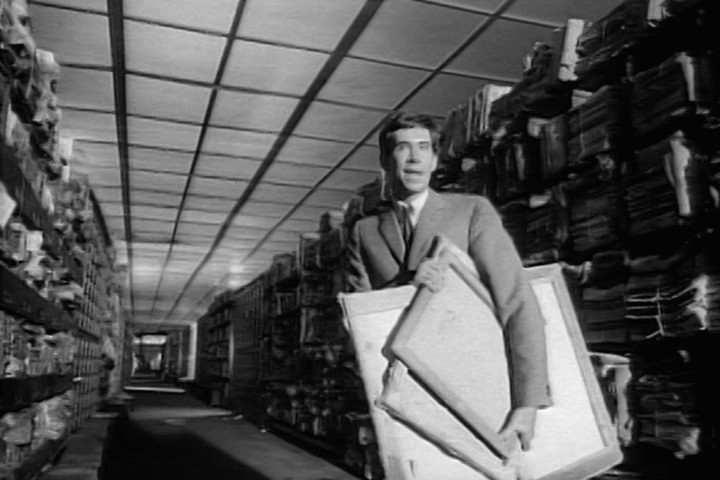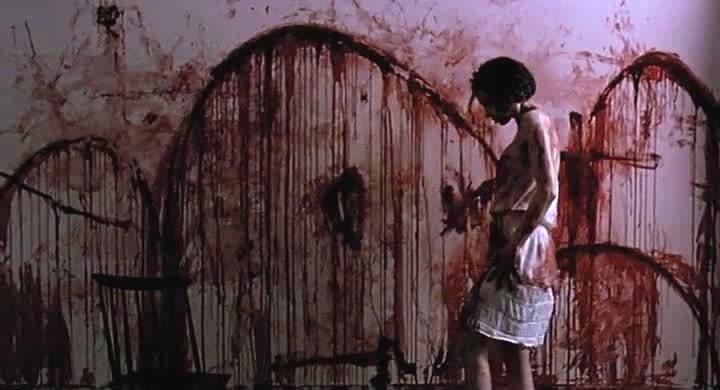Chris Marker said it beautifully in his text on Alfred Hitchcock’s Vertigo (1958): our innermost desire is for a second chance, a free replay. Cinema has always toyed with this wish, in two main ways: as a medium, it offers us the possibility of inhabiting the never-ending fantasy of a new life; and, through many particular films, it conveys the journeys of characters who, knowingly or not, yearn and struggle to give their lives a new beginning.
Let us leave aside, for a moment, the tragic course of a film such as Vertigo, and enter into this topic via a lighter genre like the teen movie, to see how its central issue can be conveyed.
One of the most typical situations of the teen genre—such as we see in Ricardo Trogi’s Canadian comedy 1981 (2009)—concerns the first day of high school or college. For the sad, introverted, unhappy boys and girls who are entering a new space, being surrounded by a fresh group of people who know nothing about them or their pasts allows an opportunity to alter the direction of their lives. This usually involves a change in style, appearance, or behavior: it’s always a matter of adjusting the inner and outer self, of fitting their image with their personality. This crucial first day on campus entails, in fact, a higher risk for the popular students (who can very easily become nobodies in this new, grown-up environment) than for the unpopular ones (who don’t have much to lose, to begin with). Blessed are those in despair, for theirs is the kingdom of second chances!
But if cinema has relentlessly played with the promise of what Marker called a “free replay” (and some films including Vertigo, both versions of Solaris [1972 & 2002], Brian De Palma’s Femme Fatale [2002], David Lynch’s Mulholland Dr. [2001] and Krzysztof Kieslowski’s Blind Chance [1981] are built, quite consciously, on this premise), it has also often portrayed—sometimes in the course of the same film—its dark reverse-shot: the impossibility of fulfilling such a promise. Here, I will sketch the three basic scenarios involved in the representation of this desire gone wrong, as well as some of the particular structures, strategies, and motifs of a group of films that fit this idea especially well.
The past is, in many cases, the worst enemy of those who intend to change their lives. It always returns in different forms and guises, haunting the protagonists, trying to pull them back to where they once belonged. One of the greatest movies ever made about this is Samuel Fuller’s The Naked Kiss (1964). Kelly (Constance Towers), the protagonist, often says “if you pretend hard enough, your wishes will come true.” And what she wishes is, indeed, to give her life a new direction, far away from the world of prostitution, crime, and perversion from whence she comes. This pretending, however, has nothing to do with faking.
In this sense, The Naked Kiss is quite different from another movie that fits this category: Orson Welles’ The Stranger (1946). Here, the new life built by the main character Rankin (played by Welles)—his job as a literature teacher, his marriage with a girl from the village—is not one in which he believes, but merely a disguise to conceal his Nazi past. This past, however, resurfaces, as a return of the repressed, in small, unexpected details: an offhand comment about Marx, the arrival of a former colleague, the almost unconscious gesture of tracing a swastika in a moment of stress…The whole film is constructed upon this tension: can these tiny but significant signs of the past betray his perfect masquerade?
By contrast, in The Naked Kiss, pretending stands for strong will and true belief. It involves, as in the teen movies already mentioned, a negotiation or readjustment between inner and outer self. The film is entirely built around Constance Towers’ facial and bodily expression. In the course of the much-referenced opening scene, she, bold and in a bra, attacks her pimp with the vigor of a wild cat. But, suddenly, the jazz score is replaced by a delicate piano tune, the credits appear over her face, and the scene turns into a kind of trance ritual, while we observe her adjusting her wig in front of a mirror, putting on make-up and relaxing the muscles of her face in order to achieve a serene expression.
In a later scene, after having escaped and arrived at a small village, Kelly looks at herself in a mirror and decides that she needs a new beginning: she gets a quiet room, a job as a nurse in a hospital for handicapped children, and starts her second life. During the course of the story, however, the past never ceases to pursue her, incarnated in different characters and situations: the policeman who tries to send her to a brothel; the young nurse who finds the easy money earned in one night more appealing than her hospital work; the kid who finds his old prosthetic legs more comfortable because he is “used to them”; her ex-pimp and the female owner of the brothel who are ready to accuse her of a crime, just because she detests them … Not to mention her future husband, Grant (Michael Dante). In a key scene, where he kisses her for the first time, something feels wrong; she stops him for a moment, then dismisses her doubt. This scene prefigures some highly dramatic and sensational consequences later in the story.
What Kelly saw in the mirror that day she decided to abandon her old life must, indeed, have been a powerful sign—as if her outer shell no longer reflected the changing structure of her inner self—because nothing stops her in this decision to give her life a new direction. No matter how tragic the events that unfold, or the difficulties this process of change brings to her, she remains convinced that she has chosen the right option.
In a completely different fashion, but still in this realm where the second chance is closely related with an external change, we find an intriguing cycle of movies featuring disfigured women. In films such as Stolen Face (1952) and A Woman’s Face (1938), as well as Georges Franju’s classic Les yeux sans visage (1960) and Pedro Almodóvar’s The Skin I Live In (2011), the hope for a new life lies—as much for the surgeons as for their female patients—in the success of an operation. In Gustaf Molander’s Swedish melodrama A Woman’s Face starring Ingrid Bergman as Anna, the obligatory scene of post-op bandage removal offers an unusual mise en scène—shots that reveal just half of the face, objects and bodies intervening between her and the camera—so as to hide the disfigured part of the body. This could be understood as a technique designed to increase the tension of the moment, or more deeply as an early warning sign: contrary to the popular belief that the face is the mirror of the soul, here the soul needs to adapt to a new situation–and thus the vision of alteration is cautiously delayed.
Not only does Anna’s past as part of a blackmail gang return, with the demand that she fulfill her contract; as well, her years of sorrow, pain, and unhappiness are not so easily forgotten. One of the film’s most audacious inventions is a hand gesture that the character performs to cover the disfigured side of her face; this gesture will be repeated long after the success of the operation, as if the weight of habit and memory is stronger than the beauty of her new looks.
Terence Fisher’s Stolen Face has a premise somewhat similar to Vertigo: a surgeon, Philip (Paul Henreid), operates on a female prisoner, Lily (Mary Mackenzie), radically altering her face so that it resembles that of his lost love, Alice (Lizabeth Scott). But, despite this new face, Lily never becomes the delicate, romantic pianist that Philip once loved—she is interested only in parties, fast pleasure, stealing, and money.
Sometimes characters are unable to change the course of their lives because they are trapped in a situation from which they cannot escape, often moving within labyrinthine spaces, or caught in a spiral where variations and repetitions of the same pattern take place. When the past reappears, it is not so much to remind the characters about their previous sins and pull them back to where they once belonged (a premise more typical of melodrama), but to entangle them in their own cobweb. In this category, we find supernatural stories that are attune to the serial, ghostly nature of this returned past; film noirs with suffocating, dark passagesand points of no return (such as Out of The Past and Detour); plus many contemporary films whose narrative structures involve memory tricks, delusional fantasies, dreams and nightmares, such as David Cronenberg’s Spider (2002), Lynch’s Lost Highway (1997), Mulholland Dr., and Inland Empire (2006), or Christian Petzold’s Yella (2007).
In Petzold’s film, an avowed but quite free remake of Carnival of Souls (Herk Harvey, 1962) re-set in the German business world, the strong drive of the female protagonist, Yella (Nina Hoss), to escape both from her failed marriage and an economically ruined enterprise seems to defy even death. In Carnival of Souls—a more abstract and formally baroque horror tale of last minute coming-to-consciousness which has inspired many recent films—the presence of water and the inventive use of sound are, as in Yella, vitally important. But, unlike its predecessor, Yella plunges us into the realm of psychological drama.When we closely examine the steps, decisions, and paths that Yella’s second career in a new town follows, we come to realize that this life is a twin variation, with some events displaced, of the previous one.
An emblematic film belonging to this category is Orson Welles’s The Trial (1962), based on Franz Kafka’s famous novel. As declared in its opening narration, “the logic of this story is the logic of a dream … or a nightmare”. In The Trial, everything corresponds to this dream logic: the quest of Joseph K (Anthony Perkins) feels dramatically real, but everything around him seems to be built on incomprehensible rules, missing codes, and impossible combinations: camera angles that give sinister shapes to objects and faces, perspectives and scales that go against any realist convention, expressionistic lighting, ambiguous dialogue (with diverse speakers’s lines often superimposed on each other) and behavior, and masterful work with space and architecture.
This is one of the movies that best represents the futile battle between a hopeless individual and the power structures around him, offering a pungent image of bureaucracy: at its best, life as an eternal waiting room; at its worst, as a corridor of death. Joseph K tries to understand something, anything, about his so-called trial: what is he actually accused of? What stage has his case, at any point, reached? But his wanderings through court rooms, lawyers’s quarters, civil servant offices, infinite hallways, and shelvings full of books and papers, bring only despair and sadness.
Welles invents a spatial framework where buildings are joined and disjoined without apparent order. The office where Joseph works, the hut where the painter lives, the tribunal: all are shown, in some scenes, as clearly independent spaces—but, at other moments, they are just as clearly linked through doors, subterranean corridors, and caves. In this cinema of disorientation, space always mutates according to mysterious laws, provoking a claustrophobic effect that, for example, a contemporary director such as Lynch has cleverly exploited in Inland Empire (adding, in his case, a temporal dimension).
“When men, even unknowingly, are to meet one day, whatever may befall each, whatever their diverging paths, on the said day, they will inevitably come together in the red circle”. This supremely deterministic statement serves as the opening quote for Jean-Pierre Melville’s masterpiece Le cercle rouge (1970). It perfectly summarizes a film that shapes the itineraries of its three main characters so that they meet in a shared destiny—a red circle, a nocturnal garden—only unveiled in the final scenes. In Melville’s cinema, there is little room for second chances: his characters seem to know, and even accept, that they are walking towards death. However, the fatalistic aura that impregnates his work is the same sensibility that informs the films belonging to my third category. Here, the characters’s attempts or desires to change the course of their lives collide with something much stronger than their will. This is a cinema ruled by the shadow of destiny—a powerful force that casts its spell and grows like a malady, contaminating everything.
Sometimes, the central conflict of the film lies precisely in the opposition between a predetermined future, and the need to escape from it; but, in the best films belonging to this group—such as Douglas Sirk’s The Tarnished Angels (1957) or Arthur Penn’s Night Moves (1975)—this fatalistic side expresses itself in a darker and more suffocating way: you can breath it in the air, sense it in the overall mise en scène, feel it as an inner, hidden fever that drives the actions of the characters.
One contemporary filmmaker deeply rooted in this tradition is Claire Denis. Her Trouble Every Day (2001) interprets the idea of destiny as a disease in a literal way. Its plot intertwines the everyday problems of two couples—Léo (Alex Descas) and Coré (Béatrice Dalle), Shane (Vincent Gallo) and June (Tricia Vessey)—and explores their different attitudes towards love, desire, and fate.
Coré and Shane are both infected with a virus that turns their libido into a murderous, cannibalistic force. However, they face this disease in completely opposing ways. Coré doesn’t feel guilt over her appetites. Her nature is childish and wild, preventing her from taking responsibility—even if she regrets the consequences of her acts and, afterwards, enters into a type of trance where the satisfaction of momentary fulfillment is mixed with the sadness of her serial need to kill. Her husband Léo takes care of her, keeps her locked in and medicated while he searches for a cure, and cleans up the mess she causes. But Coré, incapable of repressing her desire, always escapes. She knows she is doomed and, therefore, abandons herself to her fate without any resistance.
Shane, on the other hand, still hopes to turn his life around. He is a tortured character: less impulsive, with some control over his needs, so he suffers more before devouring his preys than after. And, unlike Coré, he is alone: newly married, he hopes to protect his wife June but, at the same time, does not want to lose her, so he tries to keep his condition a secret. Shane does not accept his destiny as Coré does, but this destiny is foreshadowed in nightmarish visions (his wife covered in fresh, dark blood), in unconscious and pathetically ironic behavior (his impersonation of an acccursed monster when he visits Notre Dame), and in wild displacements (his reaction to Coré is less a compassionate or altruistic measure than a gesture of anger and desperation projected against a mirror image of himself).
Trouble Every Day constructs itself in the intersection of these two, starkly different attitudes towards personal destiny. For how long can Shane sustain the illusion of a normal love life? How long can he keep up his battle against a predestined fate? This question, which drives the film’s suspense, still remains unanswered at the end. However, to close the circle we opened at the beginning, we can return to Chris Marker, who also made a film about the impossibility of changing life’s direction. The film is La jetée (1962), and what we do know thanks to it is: no matter how much we dream and struggle to change the course of our lives, at the end we cannot fool destiny–because “one cannot escape time.”


